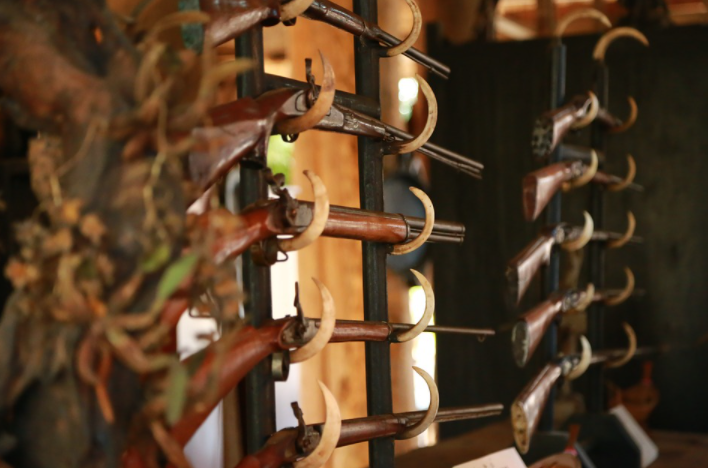
You will find some main points before purchasing a gun safe. There is a fantastic variation in the safety level offered by many manufacturers on the market; this sheet will aim to give you an excellent general understanding of what to look for when choosing your safe. There are four main things to look for when looking for a safe: the thickness of the safe, the type of lock, the fire protection, and the level of security. Let’s take a look closer.

Safe Thickness
The thickness of a safe’s walls and doors is crucial to its overall security. The thicker the walls and doors of a safe are, the more difficult it will be for a thief to open it. Safes should be made of steel, so look for a safe made of more than just sturdy steel. Also, a safe should have at least a half-inch thick solid steel door. It also should have a body of a quarter of an inch thick. If you find any guns with any less than that, those guns have relatively little security.
Fireproofing
 All high-quality safes have a fire rating, which can let you know how hot the contents will be protected and for how long. A protected safe should be fire resistant to at least about one thousand five hundred degrees Fahrenheit because this is the normal temperature of a house fire. Be skeptical of ratings given by the company itself because they may be false. Any fire resistance rating given by an unaffiliated company, such as Underwriters Laboratories (U.L.) or Intertek, should be considered an authentic representation of a fire protection rating.
All high-quality safes have a fire rating, which can let you know how hot the contents will be protected and for how long. A protected safe should be fire resistant to at least about one thousand five hundred degrees Fahrenheit because this is the normal temperature of a house fire. Be skeptical of ratings given by the company itself because they may be false. Any fire resistance rating given by an unaffiliated company, such as Underwriters Laboratories (U.L.) or Intertek, should be considered an authentic representation of a fire protection rating.
Type of Lock
There are four main types of locks available to a secure homeowner; each locks are essential, mechanical, biometric, and digital. Keyed locks are the easiest to choose and offer no protection against a skilled burglar. Mechanical locks, also known as combination locks, are incredibly secure and require no maintenance once installed. However, entering the code into the lock can be time-consuming and can easily be done incorrectly, which can be unfortunate in a disaster.
Digital keypad locks are more secure than typical mechanical locks; however, they still require constant power, which means the battery must be changed often or connected to another power generator, which increases maintenance. A biometric lock is simply the latest innovation in technology. The most common type of biometric lock is a fingerprint scanner that opens as soon as the ideal fingerprint is entered. Biometric locks allow quick access to a protected area. They are incredibly secure (assuming you don’t have a key lock), but they suffer from the same maintenance problem specific to electronic locks because they require electricity to operate. When considering a lock, check to see which one is best for your use.
Security Rating
Any reputable, safe company should have its safes tested by an independent testing laboratory. These provide the company’s standard for protected security and evaluate safes differently depending on the level of security. U.L. security testing comes in many forms, but gun safes usually fall into four different forms: RSC, TL-15, TL-30, and TL-30×6. TL-15 usually indicates that the safe could withstand a burglar attack for fifteen minutes with an assortment of tools. TL-30 could withstand a burglary attack for half an hour, and TL-30×6 could withstand a burglary attack for half an hour to get its sides. When evaluating the security level of a potentially safe, consider how much security you need.







